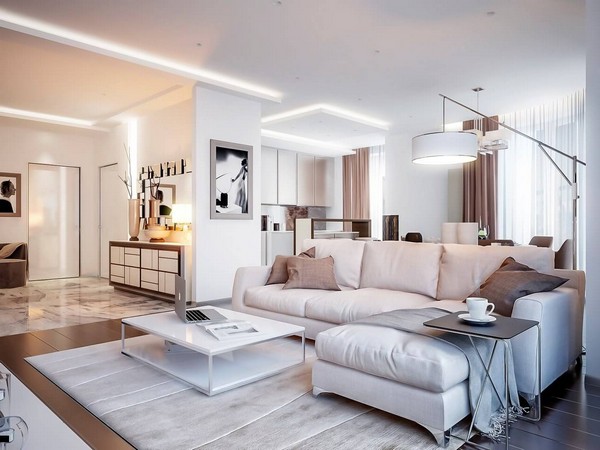

Many people now strive to create practical interiors, a factor that has propelled the spread of contemporary style around the world. The contemporary interior style is now often used to houses, apartments, and even office spaces.
Unlike the excessive conciseness of hi-tech or minimalism styles, contemporary interiors combine functionality with comfort. As a result, this style results in a stylish and original interior, while ensuring the interior is not oversaturated with furniture and decor elements.
How did the contemporary style come about?
Before delving into the specifics of the contemporary style, you need to understand what the term ‘contemporary’ means. The word ‘contemporary’ is basically a synonym of the word ‘modern’. The contemporary style began to take form in the mid-20th century. As the contemporary style emerged, designers started to develop it by skillfully combining features of the Scandinavian style with the minimalist aspects of interior design.
In the early 1950s, the world experienced a large wave of urbanization, necessitating the construction of high-rise buildings since it was difficult to provide residents with adequate housing on limited land. With the wave of urbanization, designers took up the contemporary style as a solution. At the time, the contemporary style was distinguished by a laconic execution and the presence of various decor elements.
As a result of this direction, people acquired diverse decor objects, which were sometimes incompatible as they belonged to different eras and styles, resulting in a rather disorganized style. With time, the contemporary style spread throughout Europe. By then, design and architectural schools began springing up, resulting in the organization and advancement of the contemporary style.
Currently, the contemporary style of the interior has retained its popularity. The combination of laconic furniture, which is easily obtained from stores such as IKEA, with vintage decor elements allows homeowners and designers to bring to life unique variations of this style.
The main features of an interior in a contemporary style
As mentioned above, the contemporary style of interior design does not follow clearly established rules. However, by observing various interiors, one can notice some distinctive features of this style:
- The laconic layout of the interior and simplicity in surface finishing.
- The use of functional and inexpensive furniture.
- Creating coziness in the home using vintage decorative elements.
- Proportional lines and extremely smooth surfaces.
- Limited use of decorative elements. Further, the few decorative elements used are those that attract attention due to their creative uniqueness.
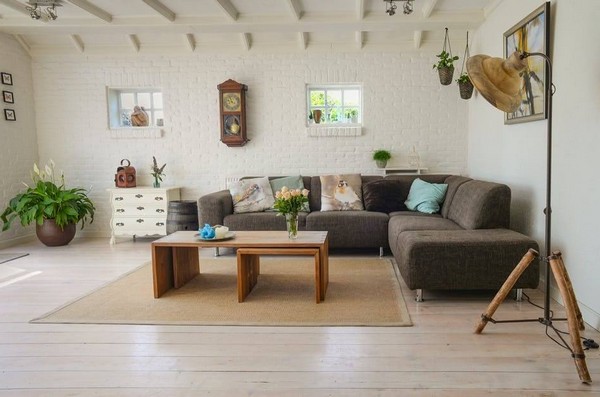
The original antique clock and floor lamp in this living room easily attract the attention of guests.
- Functional furniture: Modular furniture pieces in room such as the living room, since originating from the contemporary style, have become popular globally.
- The combination of furniture and decor: While the contemporary style uses extraordinary and bold decor, the décor used should possess at least one common feature.
- The abundance of free space: For the contemporary style, decorative partition walls or screens are unnecessary. Room zoning is instead best done using lighting fixtures or shelves.
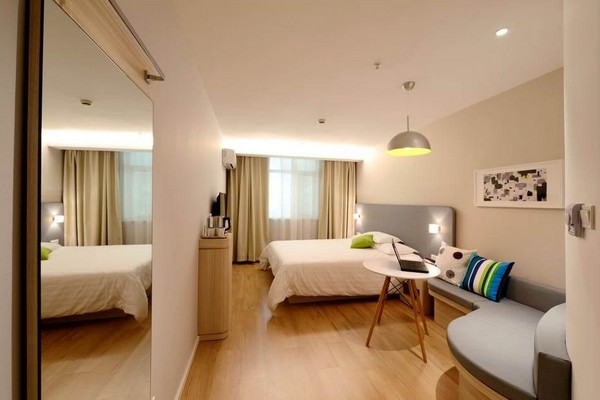
Minimum furniture, maximum free space
- Use of natural materials: Like most modern interior styles, the contemporary interior embraces environmental sustainability. The style is, therefore, heavy on the use of natural materials such as natural wood, marble, granite, organic glass, and genuine leather.
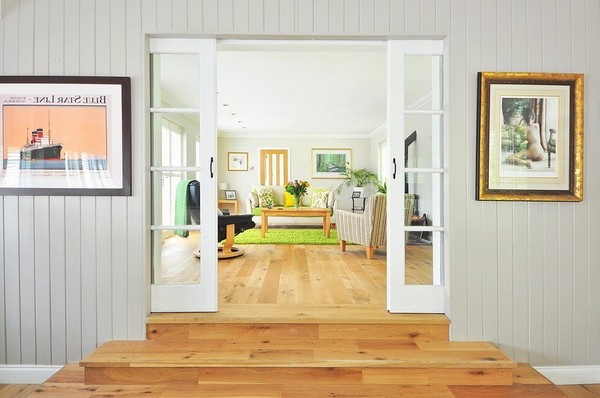
Natural materials are an important feature of contemporary-style interiors
- The combination of textures: To spice up the contemporary interior, designers often play with several textures. For example, they combine glass elements with chrome surface, while natural wood goes beautifully in combination with stone.
Surface finish
As mentioned earlier, the contemporary style involves the use of predominantly natural materials. This section focuses on helping you learn just how to use these natural materials. However, it is important to pay attention to the advice of specialists, especially if you are building the house from scratch.
To design an interior contemporary style, you need to select one of the following as a floor covering:
- Ceramic tile (if necessary, you can install a warm floor system underneath the tiles);
- Bulk floor;
- Polished board;
- Laminate flooring;
- Carpet
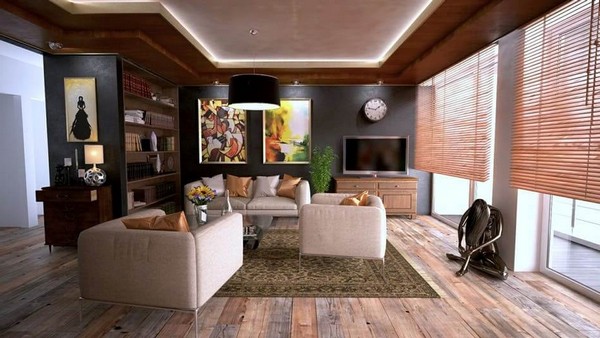
- Blackboard as a flooring in a contemporary style living room
The most popular ceiling finishes are:
- Tension systems;
- Suspended ceilings;
- whitewashed or painted ceilings,(done with special white paint).
The choice of materials for wall decoration is also quite diverse. They include:
- Plaster;
- Special paint;
- Wallpaper (mainly paper, textile or non-woven wallpaper);
- Natural or artificial stone.
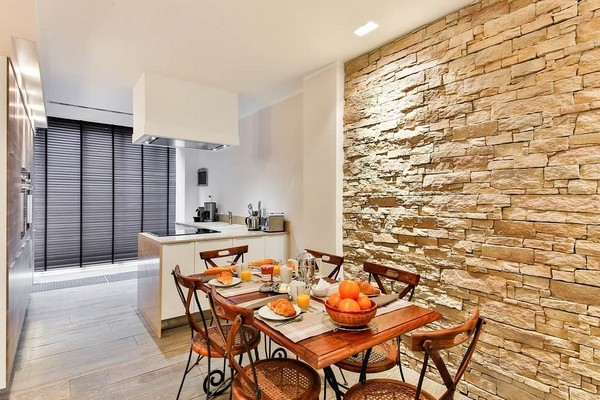
Contemporary wall stone
You can also decorate the wall using a combination of several textures. For example, walls made of a combination of stucco and stone or wallpaper come off as beautiful.
Color spectrum
Today, the contemporary style mainly features neutral pastel shades. These shades attract little attention and help to calm down the nervous system. At home, many people hope for coziness and tranquility, away from the hustle and bustle of the world. This can be achieved using gray, beige, or white tones combined with a variety of bright accents. For the background, the contemporary style mainly uses the following colors:
- White
- Gray (from light gray to graphite);
- Brown;
- Beige.
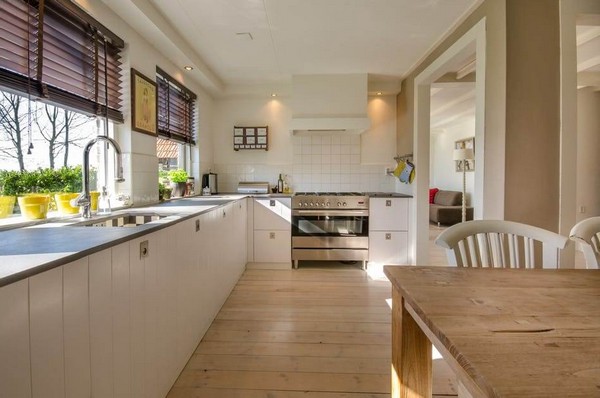
You can spice up the effect of these background colors with a variety of bright decorative elements. Designers recommend using elements in colors such as blue, orange, green, yellow, red, and purple.

Throw pillows can become a bright accent in a contemporary living room
You are encouraged to be bold and experiment with new combinations. Many experts also recommend playing with contrasts. For example, you can retain the light color of the walls and create contrast by using dark-colored furniture.
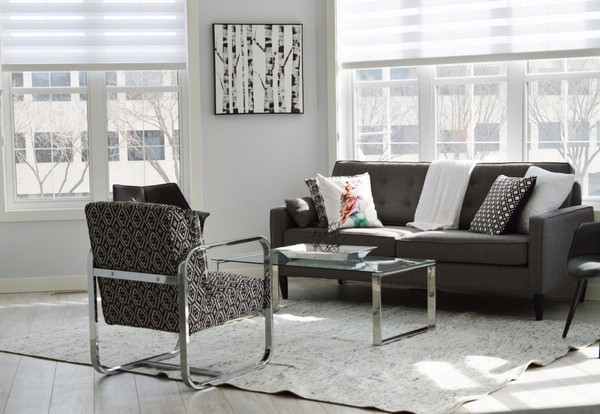
Classic interiors: A combination of white and black
However, keep in mind that the rules of interior design recommend that you place no more than two to three bright accent items in a standard single room. Otherwise, the design will appear over-saturated and chaotic.
Choosing furniture for a contemporary interior
When the contemporary style was in its infancy, designers started designing special pieces of furniture. These furniture pieces combined attractive appearance with functionality. In addition, the first contemporary-style furniture was made from inexpensive materials, a factor that made them affordable. The most popular furniture pieces today are:
- Modular systems, which contain diverse objects. These include living room walls with cabinets, which are often decorated with items such as books, personal computers, televisions, or used to store items such as clothing.
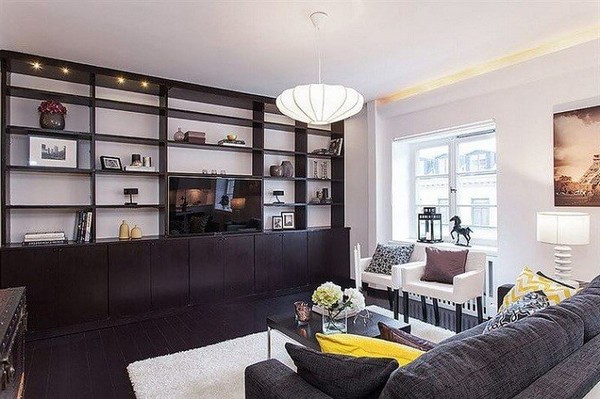
- Folding soft sections: These are furniture pieces that can be folded into different furniture items to serve different functions. An example of such furniture is a sofa, which turns into a double bed or an armchair depending on how it is foldable.
- Cabinets with pull-out shelves: This kind of furniture is not easily obtained in stores. However, you can make it to order.
- A bed with a built-in storage system, allowing you to store items such as pillows, blankets, and other spare bedding.
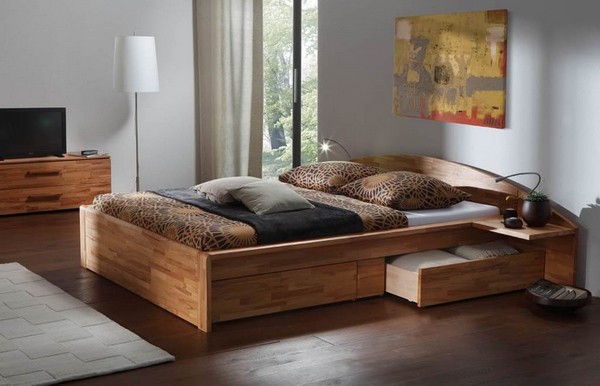
- Folding tables.
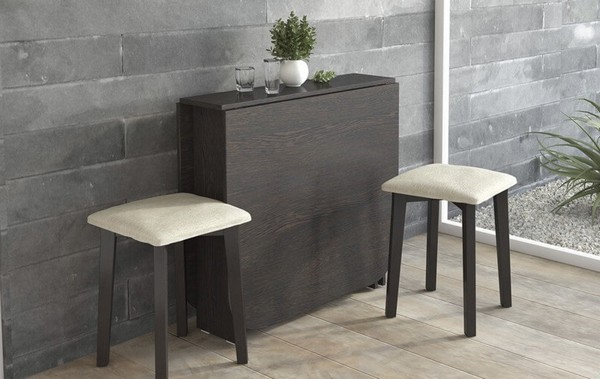
Contemporary Style Room Lighting
As you remember, earlier, the article mentioned that the contemporary style advises against the zoning of a room using partitions. However, designers get around this restriction by designating various functional zones within one room through the use of lighting. It is worth noting that it is not only artificial but also natural light, that achieves this purpose. The important role of natural light is why experts recommend the use of dark heavy curtains in a contemporary interior. Additionally, even a small window is helpful in allowing sunlight to penetrate and light up the house. To get the maximum natural light, place light tulle, transparent curtains, blinds or roller blinds on the windows.
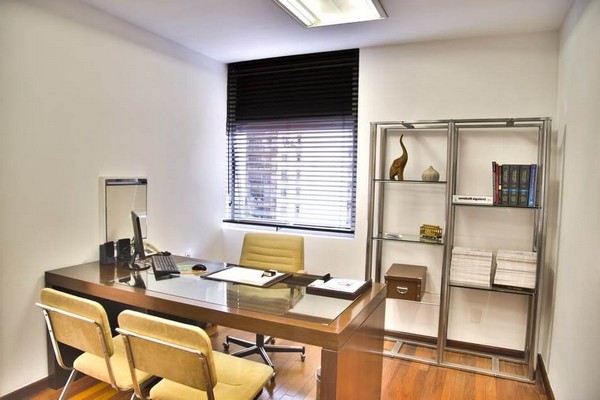
Small rooms especially need natural light.
Speaking of artificial lighting in contemporary interiors, the following popular options should be considered:
- Large central chandelier: If the room is tiny and, therefore, unsuitable for a chandelier, you can opt for a laconic ceiling lamp. Remember that a bright and extraordinary chandelier can become the very accent that will make the interior stylish and extraordinary.
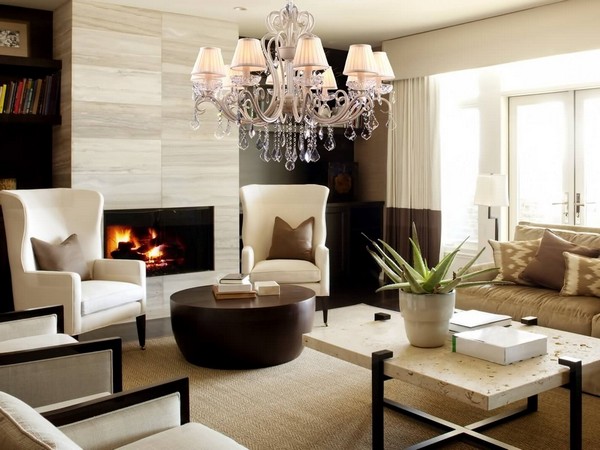 Hidden lighting, which is made using spotlights and located on shelves or in niches.
Hidden lighting, which is made using spotlights and located on shelves or in niches.
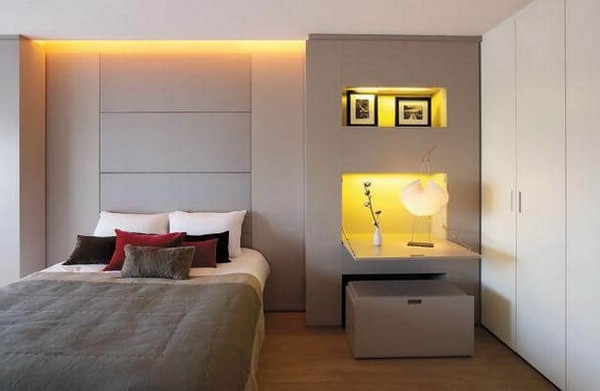
- Floor lamps, sconces, or table lamps also help to zone the space. For instance, by placing a beautiful floor lamp near a chair, you can highlight the area and distinguish it as a reading zone. A creative desk lamp will look great on your desktop while creating an elaborate zone.
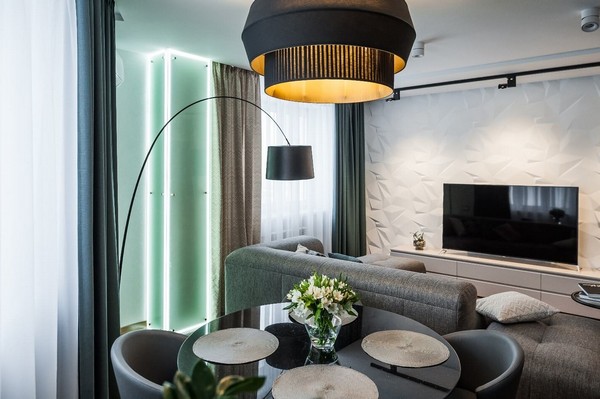
One of the main features of the contemporary style is laconicism and simplicity. Choose luminaires of a geometric shape without undue pomp. The rule here works perfectly: “The simpler, the better“.
Contemporary decor
We can all agree that monochrome pastel shades in the interior can look pretty boring. That is why these shades need to interspersed with bright accents that will attract attention by playing the role of the highlight of the room. A feature of the contemporary style is that various decorative elements may not be combined with each other according to the traditional techniques of execution, as long as the result appeals to the eye.
Therefore, you can choose wall or shelf decorations as you see fit. Moreover, there are plenty to choose from, including:
- Living plants (Tall palm trees or small decorative flowers);
- Large vases;
- Wall Clock;
- Decorative pillows;
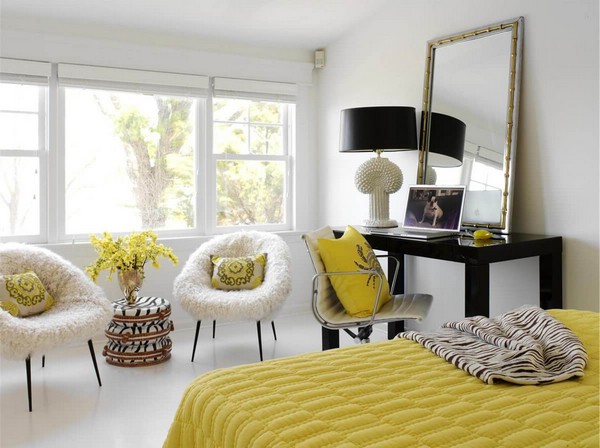
- Posters
- Paintings or frames with photographs;
- Figurines;
- Mirrors, etc.
Initially, the contemporary style suggested that the decorative elements in the room should carry some meaning to the occupants of the home. Therefore, the décor can include important items such as a vase brought from a tri or a photograph of a dear person or important event.
Contemporary-Style Rooms
The above sections have described in detail the main characteristics of the contemporary interior style. However, each separate room fulfills a certain function and carries a specific energy. For instance, there is no doubt that it is much easier to design a living room in neutral shades compared to a room such as a nursery. But this does not mean that neutral shades cannot be used in rooms such as the nursery. These shades, and other concepts of the contemporary style, are often used differently in various spaces in the house, as the following section demonstrates.
Kitchen
The kitchen is, perhaps, the most functional room in a house or apartment. After all, it is the place where the family gathers to cook and eat. However, for these activities to be done efficiently, the kitchen needs to be both appealing and comfortable. The next section will offer you important directions on achieving this desired effect.
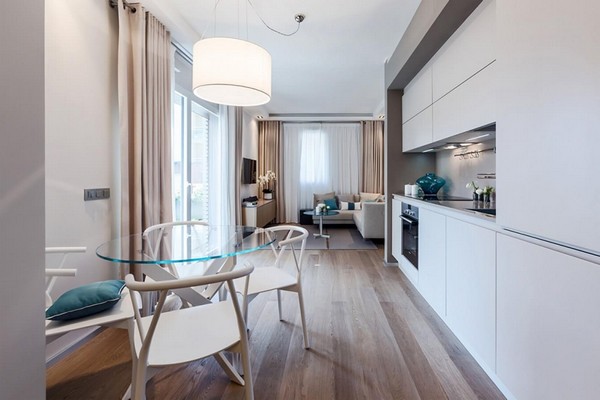
A kitchen in the contemporary style should be as open as possible. For small spaces, it is recommended to use white tones in the decoration of the walls. This color helps to visually increase the area of the room and infuse an airy vibe. Facades of furniture should also be as concise as possible without frills. You should ideally choose furniture pieces with clear geometric shapes and neutral shades. To add bright accents in the kitchen, you can use items such as unusually-designed chairs or original textiles like curtains or tablecloths.
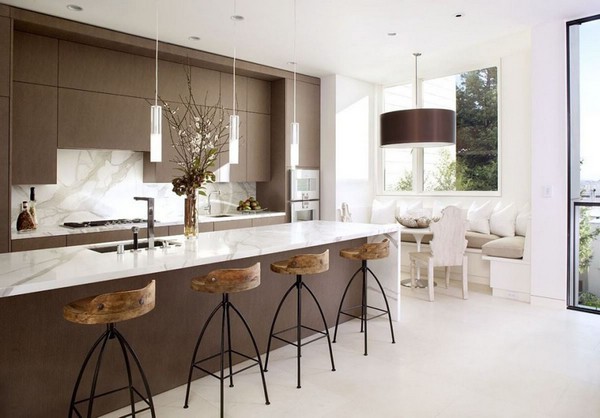
Fancy bar stools in the interior of the kitchen
If you choose an apron for a contemporary kitchen, go with ceramic tile or stone. You should avoid photo printing or the plastic panels that popular today. For tabletops, also use natural materials such as granite. If the kitchen has several functional areas, such as a cooking place and dining room, you can separate them using lighting fixtures. Place pendant or spotlights above the working area, and you can place a beautiful floor lamp near the dining table, thus distinguishing the two areas.
Bedroom
The interior of many bedrooms is characterized by the lack of bright colors, as this technique allows relaxation. The contemporary bedroom is no exception. Decorating the walls, ceiling, and floor in beige tones will soothe the eyes, and a stylish bright poster or large mirror will add originality to the interior.
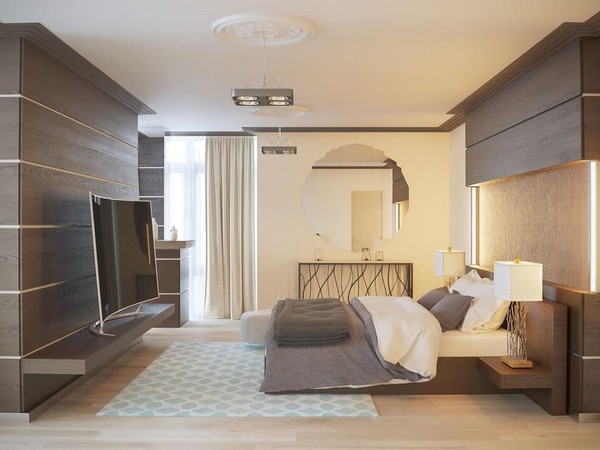
Another feature that you can use when decorating a bedroom is a wardrobe. Aside from the bed, the wardrobe is the most functional item in the bedroom and is able to accommodate a huge amount of clothing and a variety of household items. To visually increase the area of the room, you can select a cabinet with a mirror facade.
Hallway
The contemporary-style corridor should be properly lit. If you have an elongated hallway, use additional lighting or spotlights. In decorating hallway walls, it is advisable to choose paint, natural or decorative stone, or plaster. A sliding wardrobe, which is an iconic piece of furniture in the style of contemporary style, will help preserve the already limited space in the room while providing storage for clothing and household appliances such as the vacuum cleaner and ironing board.
The main idea when designing the bedroom is ensuring convenient access to every item in the room i.e., it should be convenient for you to access clothing, accessories, and other items such as umbrellas without encountering an obstacle such as a standing cabinet, bench, or shoe rack.

Living room
The living or drawing room is a room in which the whole family gathers after a hard day. Therefore, comfort paramount. In many houses and apartments, the living room has the largest number of windows, which automatically makes it the brightest room. For a contemporary living room, try to avoid heavy curtains and leave the windows as open as possible. As a last resort, you can hang a light transparent tulle, as illustrated in the picture below.
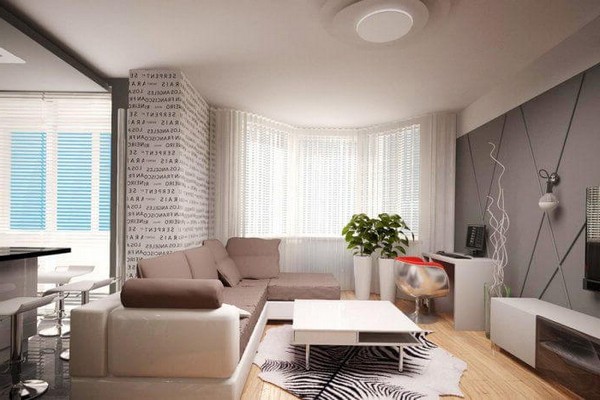
The most common color scheme for the living room is white and beige shades, particularly in the decoration of walls and ceilings. You can fix the monotony in the room with the help of bright pieces of furniture which act as accents. Such items can be an armchair or sofa. If you do not want to risk large accents, use colorful pillows, rugs, candles, or other available items as decoration elements.
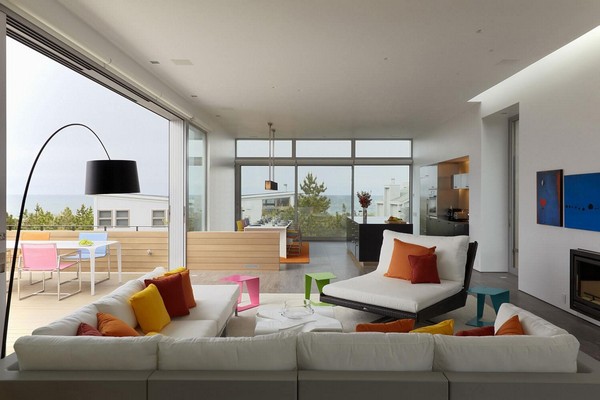
Children’s room
Several years ago, many parents preferred to use bright colors in decorating walls for children’s rooms. However, today this trend is outdated. Modern designers recommend using basic pastel colors in the children’s rooms, as these colors help the child to calm active children and enable them to relax before bedtime.
As bright accent spots, you can add your children’s favorite toys, as well as unusual pieces of furniture. The functionality of the contemporary style will come in handy in the children’s room. In the sections under the bed, for instance, you can store toys, while a folding table can save space. Teenagers, on the other hand, are bound to appreciate the abundance of closed storage systems as they make it easier to stay organized.

By the way, try using rugs or carpets as an accent. In addition to the aesthetic function, rugs and carpets offer excellent protection for young children who like to sit on the floor.
Bathroom
It is important to note that the contemporary style is not limited to the bedroom, living room, or kitchen. This style can also be used in the bathroom. Such a design as used in the bathroom is characterized by:
The presence of straight lines and simple silhouettes. This can be achieved by installing washbasins, tables, and chandeliers, made in a minimalist style. It is best to select solid-colored elements.
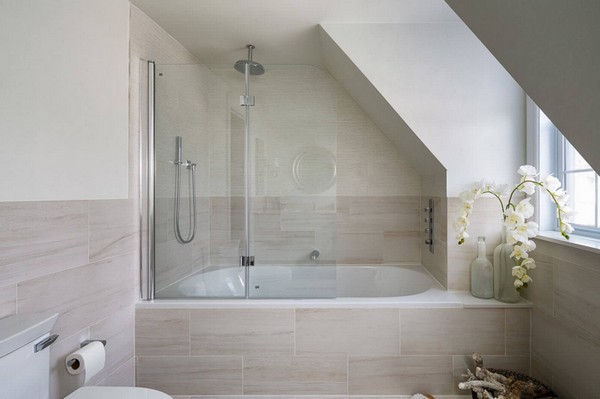
Bright bathroom in a contemporary style
Special lighting: As already mentioned above, the contemporary style in the interior maximizes the penetration of natural light. This principle applies to the bathroom, in which most often a window opening is absent. To make the room brighter, a variety of lighting devices are used. For instance, the main pendant light and spotlight are combined in some parts of the bathroom, such as on shelves, on the mirror near the washbasin, and near the shower.

Many note that the contemporary style is reminiscent of Scandinavian motifs. For example, in both styles, pastel shades are used and bright decorative elements are used. However, the contemporary style stands out for one of its important features – a reminder of different historical eras and a mixture of several styles. For instance, in the living room, laconic furniture is combined with luxurious decor, whereas in the bedroom, a vase with oriental patterns looks pretty.
Regardless, all the features and principles discussed in this article allow you to create a unique interior that fully reflects the character of the owner of the house.


